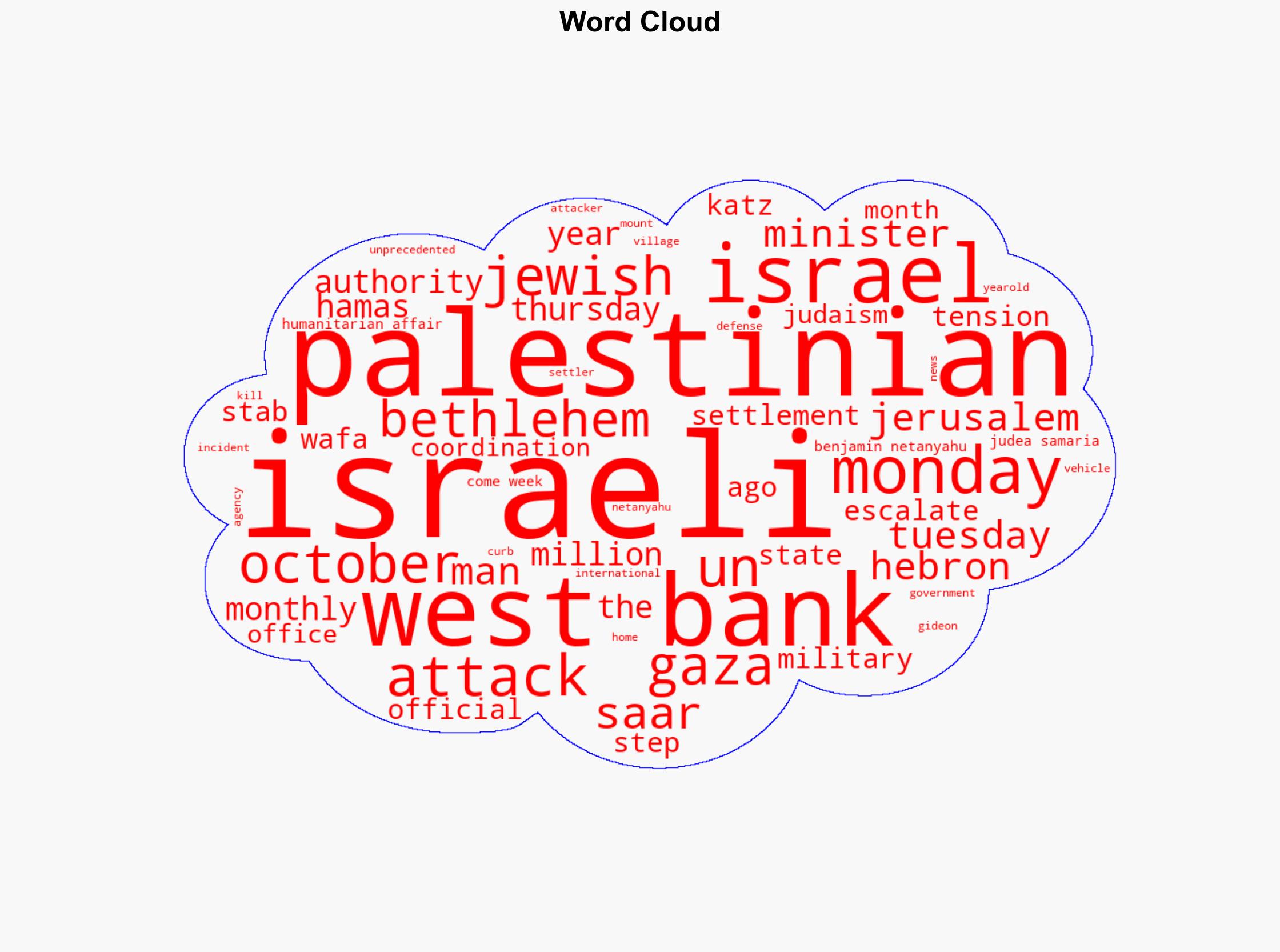West Bank car-ramming and stabbing attack kills elderly Israeli man injures 3 others – New York Post
Published on: 2025-11-19
AI-powered OSINT brief from verified open sources. Automated NLP signal extraction with human verification. See our Methodology and Why WorldWideWatchers.
Intelligence Report: West Bank Car-Ramming and Stabbing Attack
1. BLUF (Bottom Line Up Front)
With moderate confidence, the most supported hypothesis is that the attack was an isolated incident by a lone actor influenced by heightened tensions and recent violence in the region. Strategic recommendations include enhancing intelligence-sharing mechanisms and community engagement to prevent further escalation.
2. Competing Hypotheses
Hypothesis 1: The attack was an isolated incident carried out by a lone actor motivated by personal grievances and the broader socio-political climate.
Hypothesis 2: The attack was orchestrated or encouraged by a larger militant group aiming to escalate tensions and provoke a broader conflict.
Hypothesis 1 is more likely due to the lack of immediate claims of responsibility by major militant groups and the nature of the attack, which aligns with previous lone-wolf incidents. However, the presence of explosive materials suggests potential external influence, warranting further investigation.
3. Key Assumptions and Red Flags
Assumptions include the belief that the attacker’s motivations were primarily personal or ideological, and that the incident is not part of a coordinated campaign. Red flags include the discovery of explosive materials, which could indicate broader planning or support. Bias risks involve underestimating the potential for organized group involvement.
4. Implications and Strategic Risks
The attack could exacerbate existing tensions between Israeli settlers and Palestinians, potentially leading to retaliatory violence. There is a risk of political escalation if Israeli responses are perceived as disproportionate. Economic impacts could arise from increased security measures affecting local economies. Information warfare risks include the potential for both sides to exploit the incident for propaganda purposes.
5. Recommendations and Outlook
- Enhance intelligence-sharing between Israeli and Palestinian authorities to identify and mitigate threats.
- Increase community engagement initiatives to address grievances and reduce the appeal of violent actions.
- Best-case scenario: De-escalation through diplomatic efforts and effective law enforcement interventions.
- Worst-case scenario: Escalation into widespread violence and instability in the region.
- Most-likely scenario: Continued sporadic violence with intermittent periods of heightened tension.
6. Key Individuals and Entities
Benjamin Netanyahu, Gideon Saar, Israel Katz
7. Thematic Tags
Regional Focus, Middle East, Israeli-Palestinian Conflict, Terrorism, Regional Stability
Structured Analytic Techniques Applied
- Causal Layered Analysis (CLA): Analyze events across surface happenings, systems, worldviews, and myths.
- Cross-Impact Simulation: Model ripple effects across neighboring states, conflicts, or economic dependencies.
- Scenario Generation: Explore divergent futures under varying assumptions to identify plausible paths.
Explore more:
Regional Focus Briefs ·
Daily Summary ·
Support us





